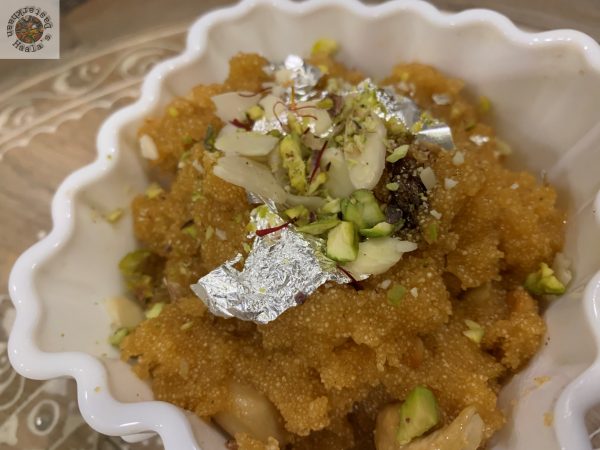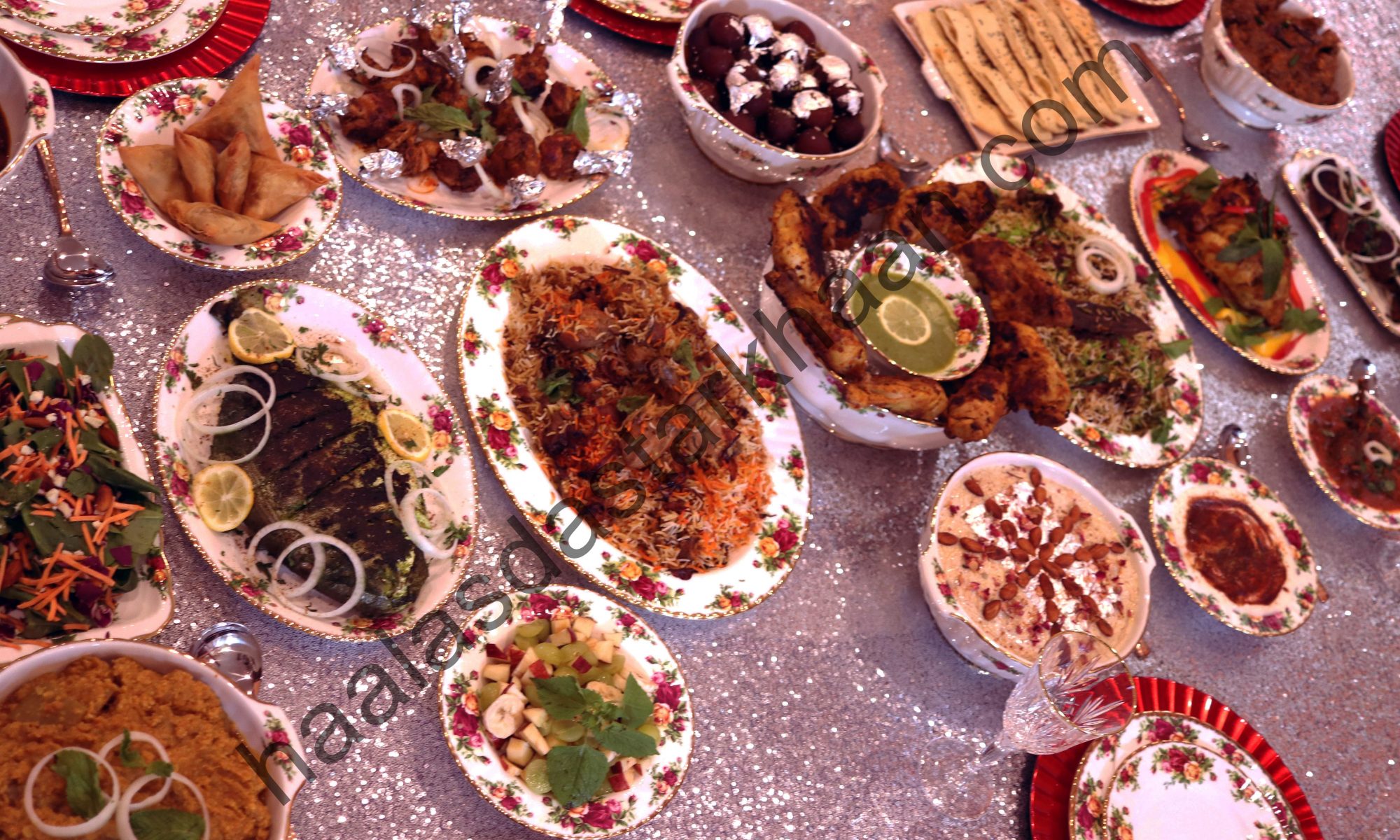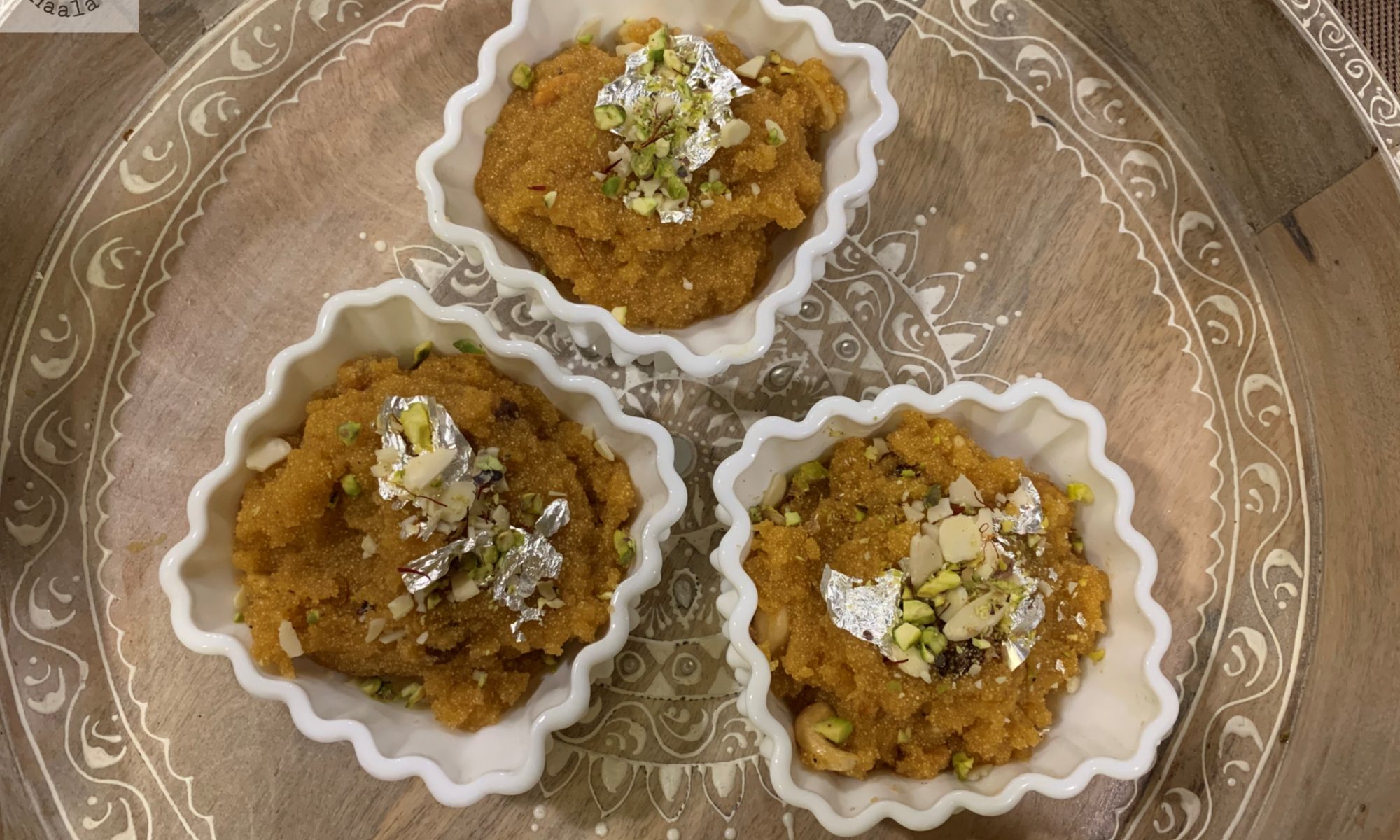Sooji when made sweet, is called Sooji ka Sheera. Several variants of this dish are available under other names in various parts of India. People also call it Sooji ka Halwa or Mohan Bhog. This dish history shows its connection with the Middle east where this cuisine, semolina is roasted and then further cooked with water, honey, camphor, saffron, and sesame oil. In 14th-century Spain, semolina was cooked with almond milk, oil and optionally saffron for coloring, therefore the actual origin of our “Indianised” Sooji ka halwa is actually unknown. But, it still is one of the fastest and yummiest sweet dishes ever.
So, a friend called me asking me for the recipe of Sooji Ka Halwa. I just casually said, “you could have just checked my blog” to which she replied that she couldn’t find it there and decided to call. That’s when I realized that I have not shared the recipe here. Sometimes, the simplest of things are things we forget to do. Honestly, this Halwa is so easy that it can be made by my 9 year old…Okay! little exaggeration, but definitely by a Bachelor who’s missing his mom’s food and can do basic cooking like making an egg. Its easier than making an omelet, since no knives and chopping is involved, Sooji ka Halwa is an easy impressive dish.
My mother never made Sooji ka halwa at home, but weddings in Rajasthan tend to have at least one gathering where this is served as a sweet dish. Don’t ask me why. While halwa is a broad term used for pudding like desserts in India, the most common halwa that my mom made was Gajar ka Halwa during winters, Ande ka halwa on some occasions halwa and Aate ka halwa on most weekends.
Sooji ka halwa was not that common and now when I think of it, I feel it might be something my mom never enjoyed cooking because if she did, she would have made it since it can be easily made it 15-20 minutes. So, Sooji Ka Halwa is made with sooji (semolina), ghee (clarified butter) , sugar and water. Everything else is optional. I only like using cashews, almonds and pistachios, whereas, Mr. Parveez likes Raisins as well in his Halwa. Some like adding milk in place of water, but I think that makes it a little heavy and creamy. Milk also tends to overpower the flavor of Sooji, so I prefer making it with water. I like flavoring mine with cardamom and saffron, making it more rich in fragrance, but you can always skip them both. Though, I would suggest that you use Cardamom powder, even if you omit the saffron.
I usually use half the amount of ghee as to Sooji. Some people prefer more ghee, but I feel this amount is good enough and it does really make a great halwa. For this recipe, I do use same amount of sugar and sooji. I use granulated sugar therefore this might sound too much sugar, though if you are using sugar with bigger granules, you should boil the sugar in the water till the sugar melts and add the water to the roasted sooji. If you are using granulated sugar like me, you can add the sugar straight to the roasted sooji and add warm water to it.
I use 3 times the water since I like my halwa more on the softer side. The most important step! If you don’t roast the sooji properly, the halwa will have raw taste. I don’t like to brown my sooji for the halwa. So I roast it on low heat, stirring continuously until it’s nice and fragrant. It takes around 7 to 8 minutes for it to roast on low heat. When you add hot water to the hot pan of roasted sooji, it bubbles up like crazy. So be very careful. Add it slowly and be careful. Make sure your halwa is smooth, so stir continuously as you add the water. If you don’t do that, it will form lumps and won’t have the creamy texture.
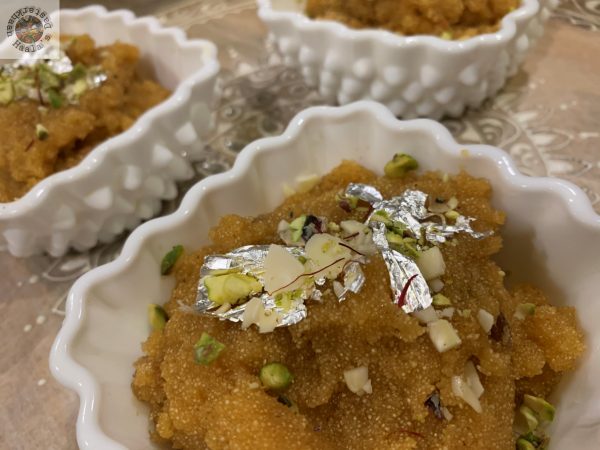
| Prep Time | 5 minutes |
| Cook Time | 20 minutes |
| Servings |
people
|
- 1 cup Sooji Coarse Semolina preferred
- 1/2 cup Ghee
- 1 cup granulated Sugar Less if you have regular sugar
- 3 cups Hot water
- 1/4 tsp cardamom powder
- 1/8 tsp Orange/yellow food color optional
- 1/8 tsp saffron Optional
- 1/4 cup Cashews + Raisins Pan fried. Optional
- 2 tbsp Almonds + Pistachios chopped. For Garnishing. Optional
- 1 No. silver leaf Optional
Ingredients
|

|
- Add Ghee to a pan. Once warm, add Sooji to it. Cook on low to medium flame for 5-7 minutes.
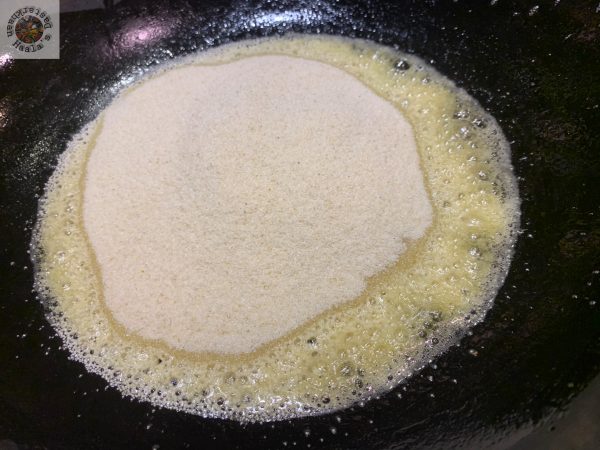
- Once the Sooji absorbs all the Ghee, add cardamom powder to it. The sooji should now have the fragrance of being well roasted and the color should also change darker, from cream to light brown.
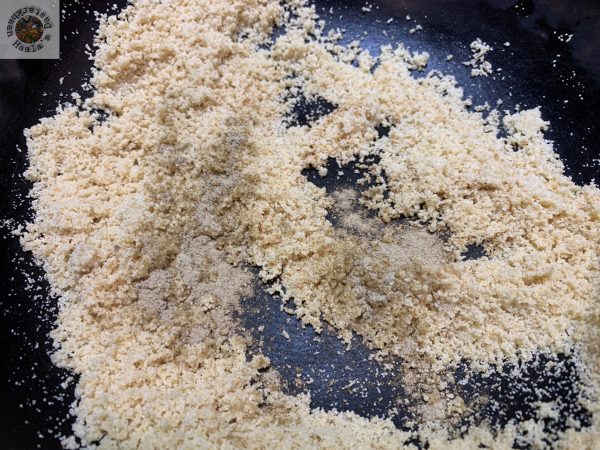
- Add the granulated sugar to the roasted sooji. Add saffron strands as well. At this point, you can add color to it as well.
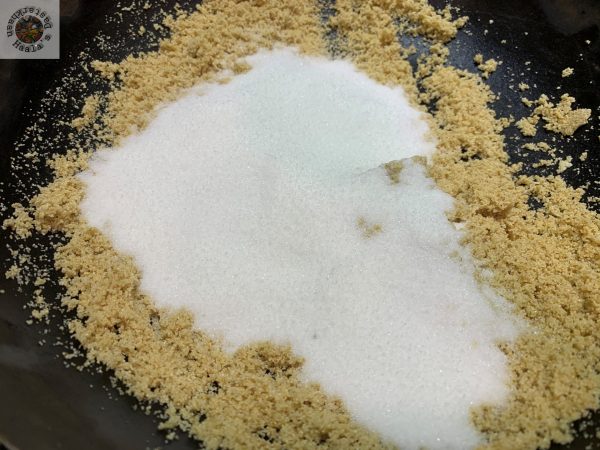
- Add the hot water. Keep stirring so it does not form any lumps.
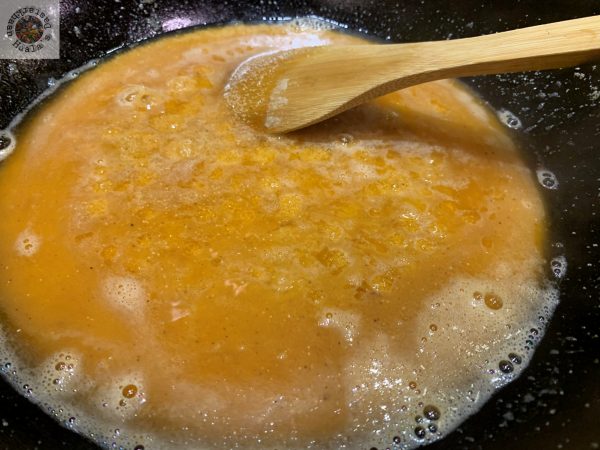
- Add the fried cashews and raisins. Mix well.
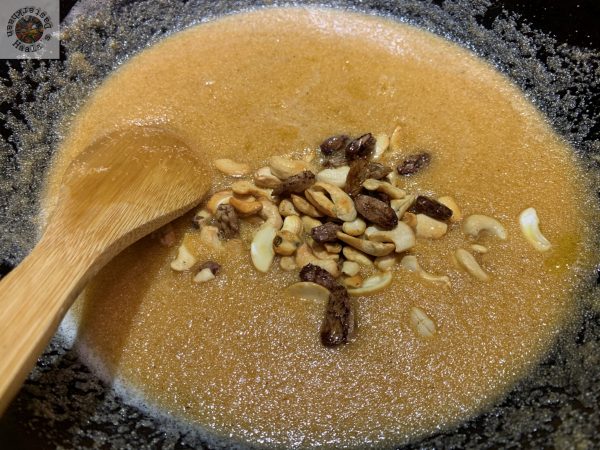
- Serve warm. Decorate with silver leaf and chopped almonds and pistachios.
